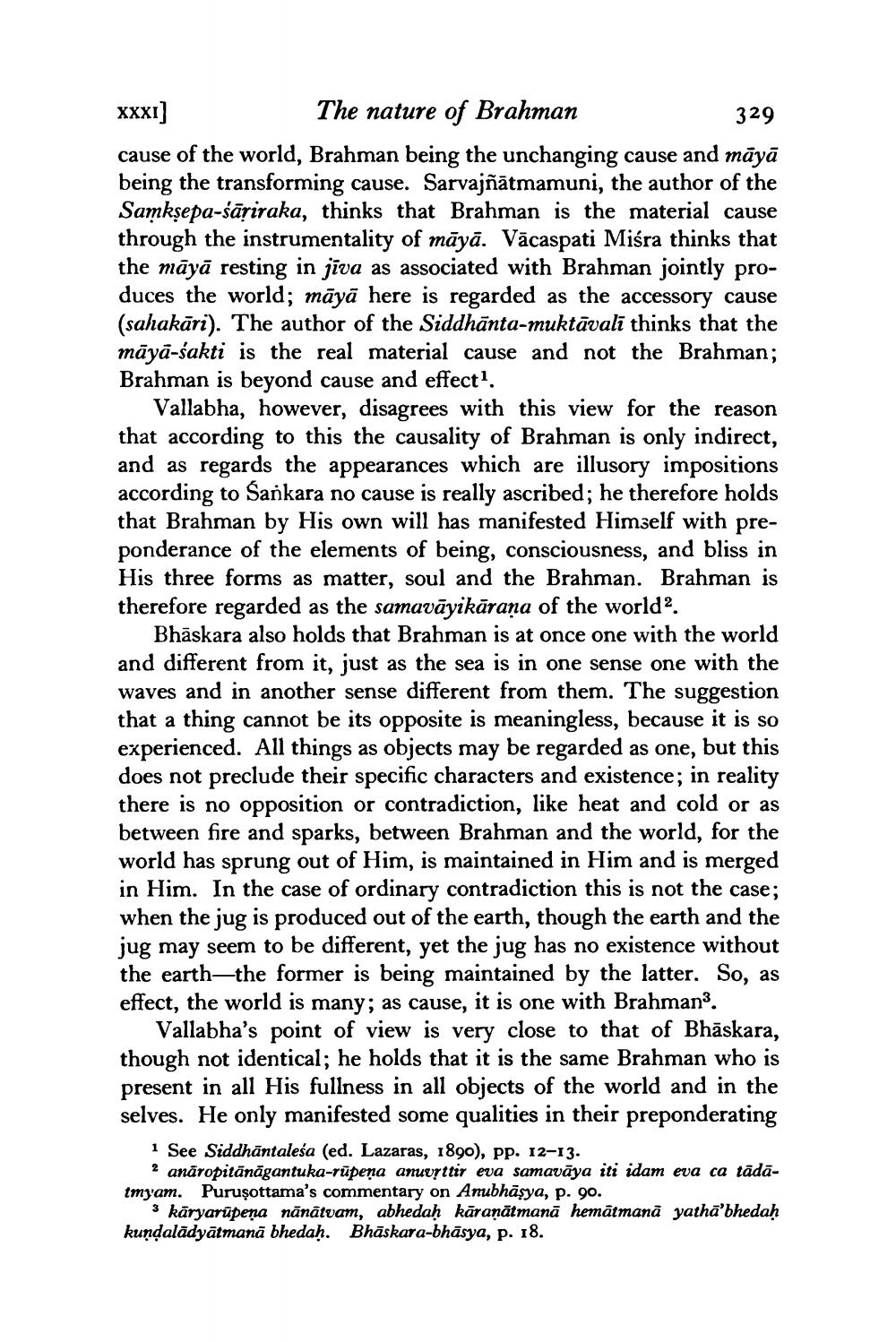________________
XXXI] The nature of Brahman
329 cause of the world, Brahman being the unchanging cause and māyā being the transforming cause. Sarvajñātmamuni, the author of the Samksepa-śāriraka, thinks that Brahman is the material cause through the instrumentality of māyā. Vācaspati Miśra thinks that the māyā resting in jīva as associated with Brahman jointly produces the world; māyā here is regarded as the accessory cause (sahakāri). The author of the Siddhānta-muktāvalī thinks that the māyā-sakti is the real material cause and not the Brahman; Brahman is beyond cause and effect.
Vallabha, however, disagrees with this view for the reason that according to this the causality of Brahman is only indirect, and as regards the appearances which are illusory impositions according to Sankara no cause is really ascribed; he therefore holds that Brahman by His own will has manifested Himself with pre ponderance of the elements of being, consciousness, and bliss in His three forms as matter, soul and the Brahman. Brahman is therefore regarded as the samavāyikāraṇa of the world?
Bhāskara also holds that Brahman is at once one with the world and different from it, just as the sea is in one sense one with the waves and in another sense different from them. The suggestion that a thing cannot be its opposite is meaningless, because it is so experienced. All things as objects may be regarded as one, but this does not preclude their specific characters and existence; in reality there is no opposition or contradiction, like heat and cold or as between fire and sparks, between Brahman and the world, for the world has sprung out of Him, is maintained in Him and is merged in Him. In the case of ordinary contradiction this is not the case; when the jug is produced out of the earth, though the earth and the jug may seem to be different, yet the jug has no existence without the earth—the former is being maintained by the latter. So, as effect, the world is many; as cause, it is one with Brahmans.
Vallabha's point of view is very close to that of Bhāskara, though not identical; he holds that it is the same Brahman who is present in all His fullness in all objects of the world and in the selves. He only manifested some qualities in their preponderating
1 See Siddhāntalesa (ed. Lazaras, 1890), pp. 12–13.
2 anáropitānāgantuka-rūpeṇa anuurttir eva samavāya iti idam eva ca tādātmyam. Puruşottama's commentary on Amubhāşya, p. 90.
3 kāryarūpeņa nānātvam, abhedaḥ kāramātmanā hemātmana yathā'bhedaḥ kundalādyātmanā bhedah. Bhāskara-bhāsya, p. 18.




